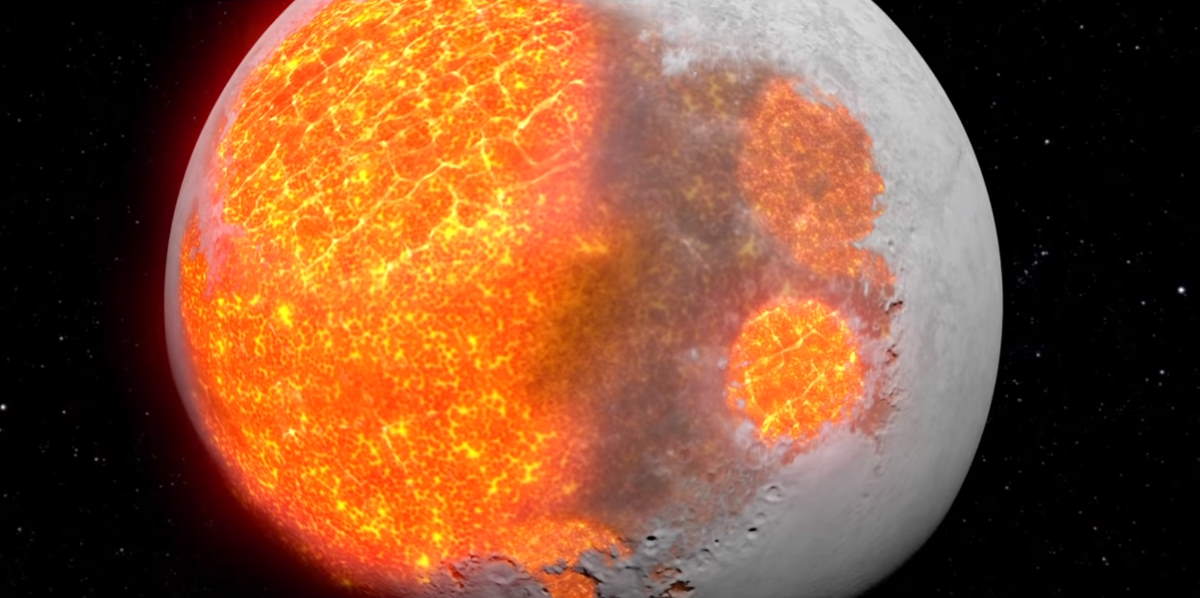The moon illusion: if you go out on a clear night when it’s a full moon, you may notice how gigantic the Earth’s satellite looks when it’s near the horizon. But, in fact, that moon is the exact same size as every other time you’ve ever seen it in the sky. You can test this by holding your thumbnail at arm’s length and comparing it to the size of the Moon when it is near the horizon and high in the sky, and you’ll see it doesn’t change size.
Photographs of the Moon at different elevations also show that its size remains the same. In fact, it plays a trick on your brain which is called the “Moon Illusion”. This illusion has been known since ancient times, and an explanation of this optical phenomenon is still debated.
The moon illusion is subtle for some and dramatic for others (including me). A small fraction of people even don’t see it.

First of all, the eccentricity of the Moon’s orbit isn’t the cause. The Moon follows an elliptic orbit around Earth and sometimes it gets closer to the Earth than the other times. When it’s also full moon at its closest point to the Earth, it’s called Supermoon. As a result, the moon appears larger and brighter than usual in the sky. But a supermoon is actually not that “super”, it only looks around 14% in apparent diameter or 30% in apparent area than the Micromoon, its counterpart.
But the moon on the horizon looks way bigger than that. And, to make matters worse, the moon is actually farther away when it’s on the horizon than it’s high in the sky: an entire radius of Earth farther, which is about 6,371 km or 3,959 mi. See the image below:
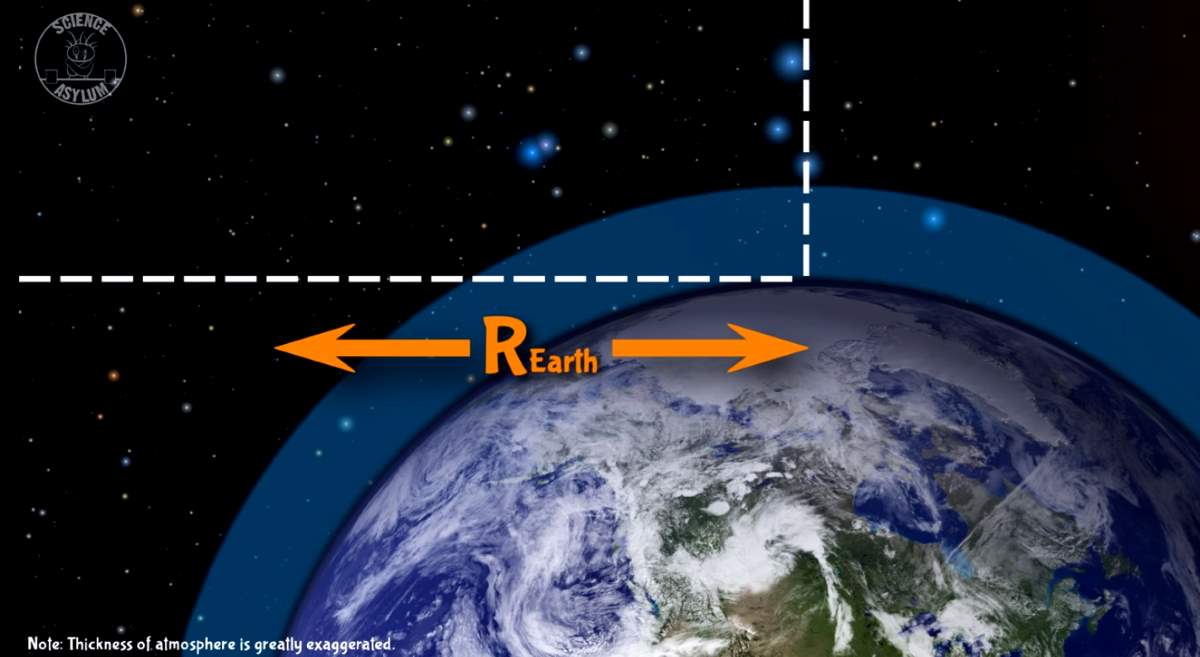
Possible explanations of the Moon Illusion
Why does our brain process the size of the moon differently when it is in different places in the sky? Here are some possible explanations of the Moon Illusion:
Explanation 1: visual reference points
The main theory suggests that when the moon is near the horizon, there are many visual reference points: trees, hills, buildings, mountains… with which it’s size can be compared. But when the moon resides high in the sky there is nothing around it to compare, and it seems smaller against the vastness of the night sky.
It’s similar to an effect known as the Ebbinghaus illusion: in the image below, the two orange circles are exactly the same size; however, the one on the right appears larger. The small circles are comparable to the horizon moon with smaller objects in sight, while the large circles comparable to the high moon surrounded by the vast emptiness of the night sky (see notes 1).
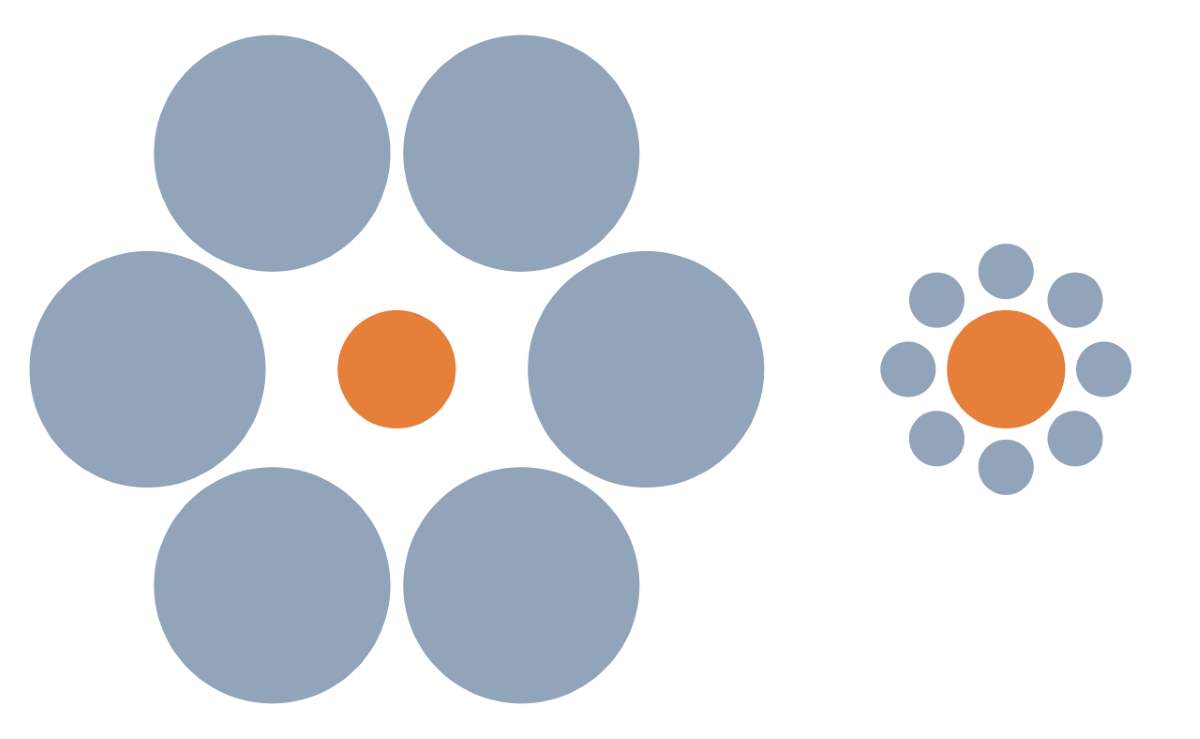
In the best-known version of the illusion, two circles of identical size are placed near to each other, and one is surrounded by large circles while the other is surrounded by small circles. As a result of the juxtaposition of circles, the central circle surrounded by large circles appears smaller than the central circle surrounded by small circles. Image and text: Wikipedia
Explanation 2: Ponzo illusion
Another possible explanation is the “Ponzo illusion”, a geometrical-optical illusion that was first demonstrated in 1911 by the Italian psychologist Mario Ponzo (1882-1960).
Ponzo suggested that the human mind judges an object’s size based on its background. He showed this by drawing two identical lines across a pair of converging lines, similar to railway tracks (see the image below). The upper line looks longer because we interpret the converging sides according to linear perspective as parallel lines receding into the distance. In this context, we interpret the upper line as though it were farther away, so we see it as longer – a farther object would have to be longer than a nearer one for both to produce retinal images of the same size.
The Ponzo illusion is one possible explanation of the Moon illusion: if something looks like it’s getting farther away (like the moon in the horizon), but doesn’t change the size, then it must be growing. Also known as the apparent distance theory, this explanation evidently was first clearly described by the ancient Greek astronomer Cleomedes around 200 A.D.
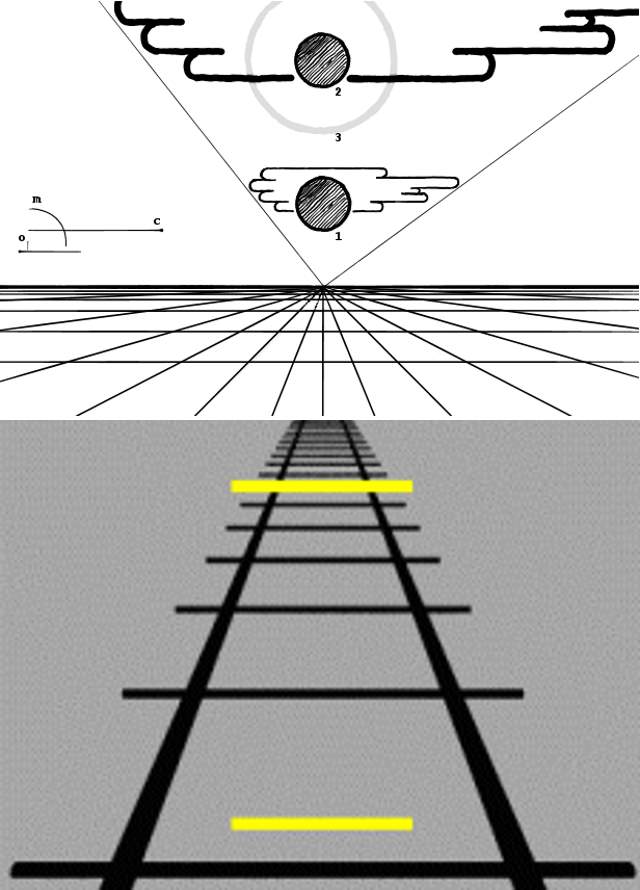
Explanation 3: The Sky-dome model
The Sky-dome model: unlike the Ponzo illusion, which assumes a flat sky, the sky-dome model assumes a curved sky above flat ground. It suggests that maybe our brains map all the really far stuff (like stars and the moon) onto an imaginary dome above our heads. We connect the sky to the ground at the horizon, and as a result, underestimate the distance to sky objects. When the moon is high in the sky, our brain thinks it is way closer than when it is on the horizon, hence it must be smaller (or vice versa).
Here in the video below, physicist Nick Lucid talks about the “moon illusion” and lists several possible explanations of why the moon looks larger when it’s near the horizon. If you haven’t subscribed to his channel yet, I would strongly suggest that you do now. He publishes great videos covering some interesting science topics.
Here’s another video by the ASAPScience channel, written and created by Mitchell Moffit (twitter @mitchellmoffit) and Gregory Brown (twitter @whalewatchmeplz):
Written and created by Mitchell Moffit (twitter @mitchellmoffit) and Gregory Brown (twitter @whalewatchmeplz).

Did you know there were also “audio illusions“? We can easily be fooled into hearing something that actually isn’t there.
Notes
- Maybe Ebbinghaus illusion is not the cause of the Moon Illusion. In the image below, I deleted the big circles on the left, so it resembles the moon in the sky. Now both orange circles look the same size (at least, to me).
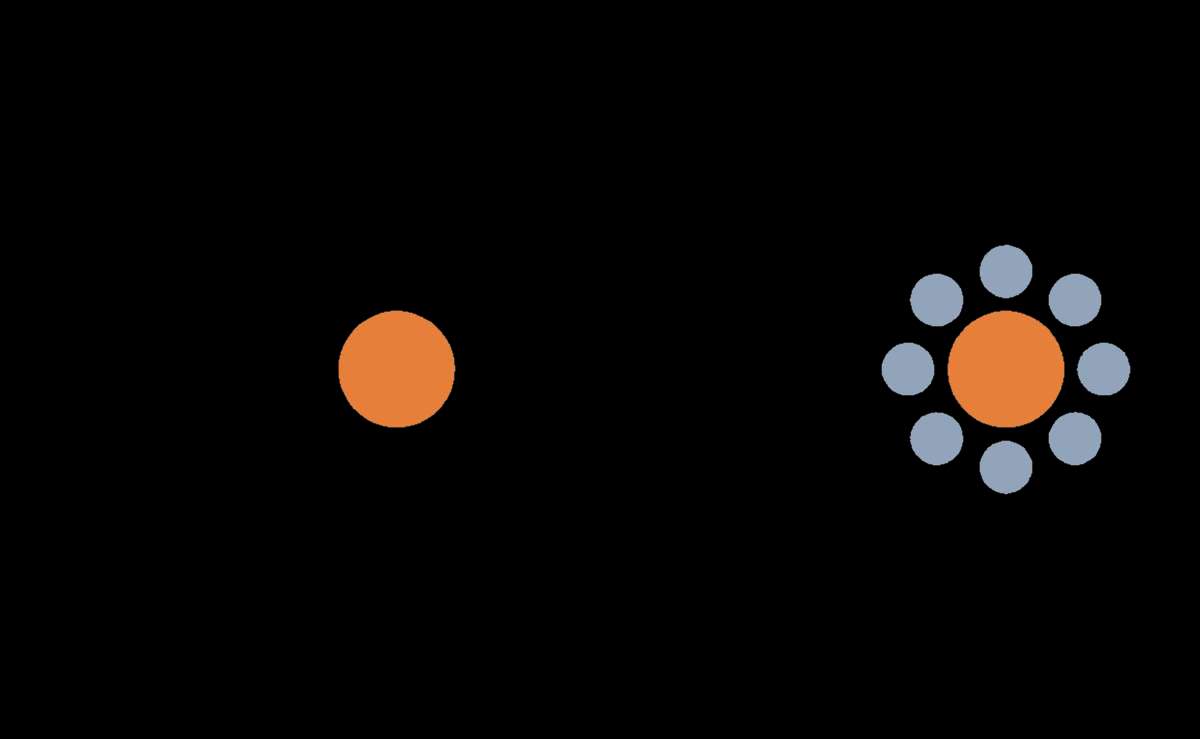
Sources
- Moon illusion on Wikipedia
- Ebbinghaus illusion on Wikipedia
- Ponzo illusion on Wikipedia
- Moon Landings: All-Time List [1966-2025] - February 2, 2025
- What Is Max-Q and Why Is It Important During Rocket Launches? - January 16, 2025
- Top 10 Tallest Rockets Ever Launched [2025 Update] - January 16, 2025
